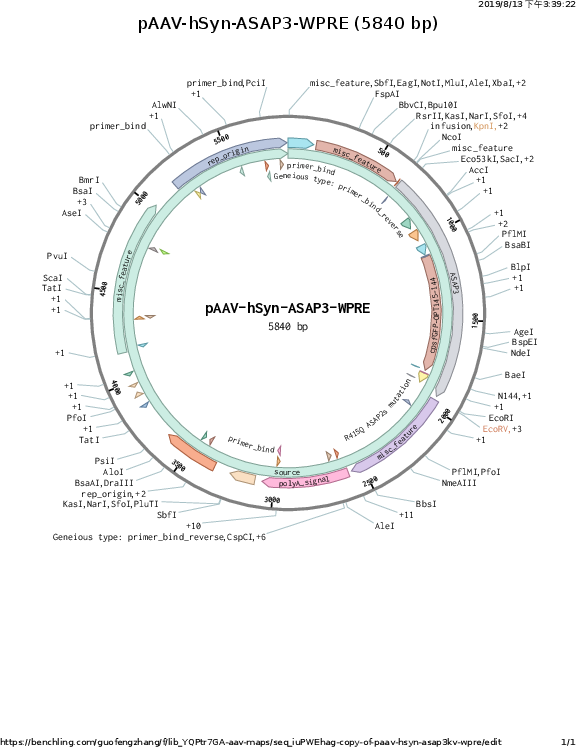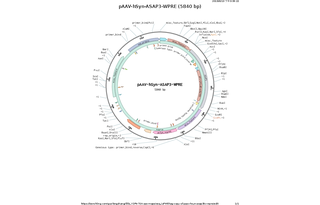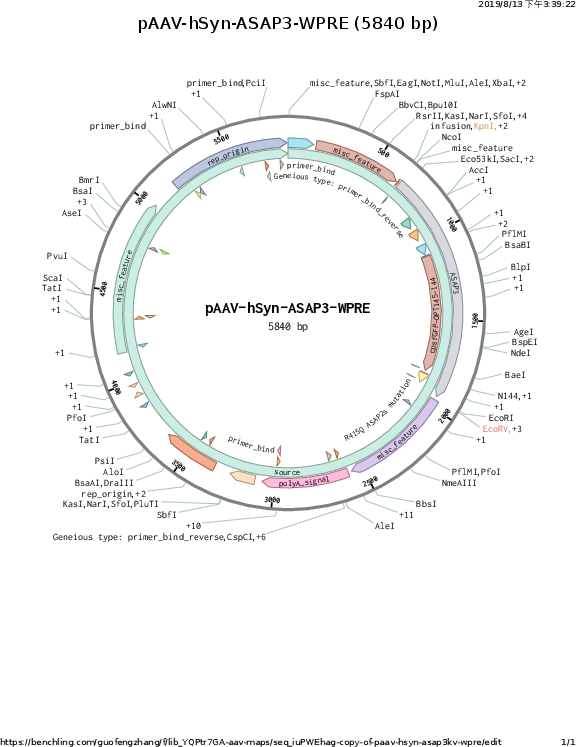-
Purposeexpresses ASAP3(ASAP-family genetically encoded voltage indicator) in mammalian cells, gene delivered by pAAV-hSyn vector
-
Depositing Lab
-
Sequence Information
Ordering
| Item | Catalog # | Description | Quantity | Price (USD) | |
|---|---|---|---|---|---|
| Plasmid | 132331 | Standard format: Plasmid sent in bacteria as agar stab | 1 | $85 | |

Want a viral vector made from this plasmid?
Make a packaging request and we'll get back to you.
Please log in to submit a packaging request.
-
SerotypeSelect serotype for details See details about
-
PricingSelect serotype and quantity $ USD for preparation of µL virus + $30 USD for plasmid.
-
How this works
- Place a request for a quantity of 10 (1 mL), 25 (2.5 mL), or 50 (5 mL). Our all-inclusive pricing includes DNA production and QC.
- Addgene will quickly confirm that we can produce a high-quality prep for you.
- Track your request and place an order from within your account. Payment information must be added before we can begin processing your order.
- Receive your prep in 6–9 weeks after the MTA is approved by your organization.
- Learn more about our Packaged on Request Service.
Backbone
-
Vector backbonepAAV-hSynapsin
-
Backbone manufactureraddgene
- Backbone size w/o insert (bp) 4562
- Total vector size (bp) 5840
-
Vector typeMammalian Expression, AAV
Growth in Bacteria
-
Bacterial Resistance(s)Ampicillin, 100 μg/mL
-
Growth Temperature37°C
-
Growth Strain(s)NEB Stable
-
Copy numberHigh Copy
Gene/Insert
-
Gene/Insert nameASAP3
-
Alt nameAccelerated Sensor of Action Potentials 3
-
SpeciesSynthetic
-
Insert Size (bp)1278
- Promoter hSynapsin
Cloning Information
- Cloning method Restriction Enzyme
- 5′ cloning site BamHI (not destroyed)
- 3′ cloning site HindIII (not destroyed)
- 5′ sequencing primer gcagcggaggagtc
- 3′ sequencing primer cattaaagcagcgtatcc (Common Sequencing Primers)
Resource Information
-
Supplemental Documents
-
Addgene Notes
-
Articles Citing this Plasmid
Terms and Licenses
-
Academic/Nonprofit Terms
-
Industry Terms
- Not Available to Industry
Trademarks:
- Zeocin® is an InvivoGen trademark.
These plasmids were created by your colleagues. Please acknowledge the Principal Investigator, cite the article in which the plasmids were described, and include Addgene in the Materials and Methods of your future publications.
-
For your Materials & Methods section:
pAAV-hSyn-ASAP3-WPRE was a gift from Michael Lin (Addgene plasmid # 132331 ; http://n2t.net/addgene:132331 ; RRID:Addgene_132331) -
For your References section:
Ultrafast Two-Photon Imaging of a High-Gain Voltage Indicator in Awake Behaving Mice. Villette V, Chavarha M, Dimov IK, Bradley J, Pradhan L, Mathieu B, Evans SW, Chamberland S, Shi D, Yang R, Kim BB, Ayon A, Jalil A, St-Pierre F, Schnitzer MJ, Bi G, Toth K, Ding J, Dieudonne S, Lin MZ. Cell. 2019 Dec 12;179(7):1590-1608.e23. doi: 10.1016/j.cell.2019.11.004. 10.1016/j.cell.2019.11.004 PubMed 31835034





